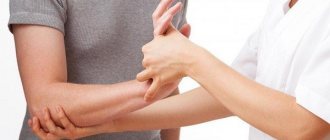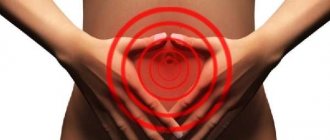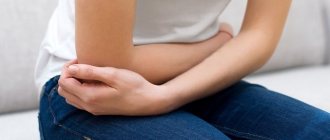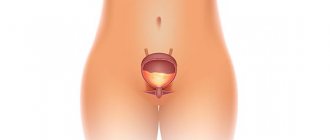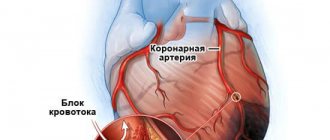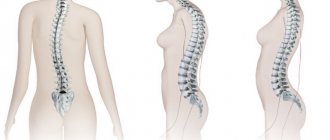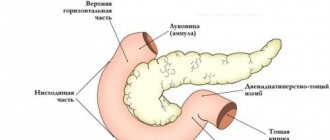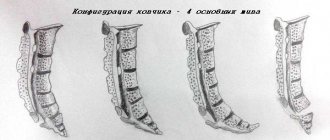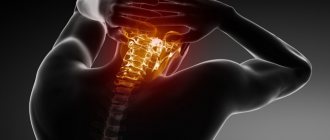There is hardly a single person who has encountered such a problem as lower back pain at least once in their life. As a rule, pain occurs suddenly and can go unnoticed for quite a long time. But is it worth ignoring the signals from your own body?
The modern rhythm of life forces us to spend most of our time in a sitting position. The result is an uneven load on some muscles and a lack of load on others. Exercise, long walks, swimming in the pool and other physical activities are excellent prevention of various diseases, but it is not always possible to find time for all this. Let's talk about the causes of pain in the lumbar region and what measures should be taken when it appears.
Reason one: diseases of the musculoskeletal system
The most common cause of lower back pain is spinal disease . Among them are the following:
- osteochondrosis;
- scoliosis;
- injuries;
- radiculitis;
- tuberculosis and syphilitic processes;
- neoplasms (tumors).
We put osteochondrosis in first place, because this disease is the most common and one of the most dangerous.
Initially, osteochondrosis may be asymptomatic. Unpleasant sensations can only be felt when the intervertebral discs have already become sufficiently thin and the nerves have begun to be pinched.
The next stage is the development of inflammation, which leads to swelling and even greater infringement.
How does the disease manifest? Externally, osteochondrosis manifests itself as curvature of the spine and limitation of movements. In this case, the spine in the lumbar region hurts quite severely. Pain relief is observed in a horizontal position when taking a certain position.
Which doctor should I go to?
Since osteochondrosis has a number of concomitant diseases (for example, gastrointestinal diseases), you need to consult a therapist to draw up a treatment plan. Based on the tests performed, he will be able to give a referral for consultation to specialized specialists.
First aid
First aid is especially necessary for a patient if he has a so-called “lumbago”. To alleviate the condition, it is necessary to lay the person on his back on a hard surface.
The use of ointments or creams is not recommended . You can give a small dose of painkiller and wait for the doctor to arrive. You should not give painkillers in large quantities - if you drown out the pain, the doctor will not be able to make a correct diagnosis.
Treatment of osteochondrosis
First of all, it is necessary to observe strict bed rest. Treatment can be divided into several stages:
- Treatment of pain syndrome. Can be done both at home and in a hospital. Compresses are applied to the patient, rubbing is done, and painkillers are given.
- Therapy, including the use of vasodilators, dehydrating drugs, pain blockades.
- Carrying out neurological procedures (manipulation, physiotherapy, administration of necessary drugs)
- Recovery stage. It is carried out in a hospital, at home or in a sanatorium. This stage is aimed at restoring functions and rehabilitation of the body.
After the course of treatment, it is necessary to follow preventive measures , namely: move more, if the work is sedentary - take breaks every hour, sleep on a hard bed, go to the pool and monitor your weight.
Main causes of violations
Physical overexertion
One of the main causes of lower back pain in women is intense physical activity.
In most patients, pain develops after unusual activities. The body's unpreparedness for the active regime quickly manifests itself in the form of such an unpleasant symptom. If the pain persists for more than 3–4 days and the spasms are constant, you will need the help of a specialist. Often, increased loads can initiate relapses of chronic pathologies of the spinal column, as well as damage to the lumbar muscles or intervertebral discs.
Diagnosis and treatment
To eliminate pain in the lumbar region, various pain-relieving ointments (Chondroxid, Fastum gel) are effective. You can increase the effect of the product if you use gels in combination with oral antispasmodics (Nosh-pa, Spazmalgon). When a woman does not experience any improvement in her well-being, she should consult a neurologist and a chiropractor to rule out spinal abnormalities. To clarify the diagnosis and identify the causes, diagnostic methods such as X-ray, MRI and CT are used.
Diseases of the spinal column
The most common reason for lower back pain in women is osteochondrosis.
In the presence of this pathology, patients suffer from periodically occurring aching pains, which intensify during bending, rapid movements, and carrying heavy objects. Improvement in the condition is observed only in a supine position. In addition to the fact that a woman constantly has back pain, spastic sensations can radiate to the thigh, buttock, leg, and lower abdomen. Failure to see a doctor in a timely manner leads to changes in the structure of cartilage and the formation of hernias.
Diagnosis and treatment
To prescribe a treatment course, you can consult a therapist. You should also visit a neurologist. To establish a correct diagnosis and check the structure of the spine, it is necessary to undergo examinations (MRI, X-ray, OBC). After analyzing the results, the doctor may prescribe anti-inflammatory medications (Diclofenac, Meloxicam), chondroprotectors (Osteogenon, Teraflex, Artra, Dona), muscle relaxants (Mydocalm). For more effective pain relief, novocaine blockade is performed). Next, it is possible to prescribe a course of exercise therapy and physiotherapy. In severe cases, surgery is used.
Gynecological diseases
Pain in the lumbar region in a woman associated with cramps in the lower abdomen often indicates the presence of pathologies of the female organs. The reasons for this condition may be:
- inflammation of the genital organs;
- endometriosis;
- tumors of various origins (additionally, consultation with an oncologist is recommended);
- cysts/fibroids;
- polliposis, etc.
Often, in addition to pain in the lumbar region, patients experience the following symptoms: fever, discharge mixed with blood, fever, cycle disruptions, neurosis, etc.
Diagnosis and treatment
In this situation, a woman should consult a gynecologist. The doctor will conduct an examination, give directions for tests (LHC, Wassermann reaction), ultrasound and x-ray of the pelvis. If the presence of tumors is suspected, MRI and CT are additionally performed. Treatment is carried out only after a correct diagnosis.
Kidney diseases
When your back hurts in the lumbar region, the causes of this phenomenon may be nephrological pathologies. If periodic dull aching spasms in the lumbar region are observed, this often indicates an exacerbation of pyelonephritis and other diseases of the urinary system in a woman (read about kidney diseases here). Unilateral pain may be one of the symptoms of diseases such as urolithiasis or inflammatory process of organs.
Diagnosis, how to treat
The presence of the described symptoms is a serious reason to contact a therapist, nephrologist and urologist. Making a correct diagnosis is possible only after identifying the cause of the disease and undergoing a full examination, which includes the following studies:
- UAC;
- OAM;
- Nechiporenko/Zemnitsky test;
- Ultrasound.
Therapy is carried out according to indications. For cystitis and pyelonephritis, the disease is treated with antibiotics (Norfloxacin, Furamag) and uroantiseptics (Canephron). In addition, you should adhere to a diet (exclude salty/spicy foods).
Physical inactivity
A sedentary lifestyle causes a weakening of tone and a decrease in supporting muscle function.
In connection with these disorders, women develop various pathologies in which there is pain in the lower back and lower abdomen.
Diagnosis and treatment
The main way out of this situation will be to change the usual rhythm of life. Doctors advise taking walks more often, doing gymnastics, and when doing sedentary work, doing a 5-minute decompression every 1.5 hours.
Pregnancy
Pain in the lumbar region in late pregnant women is a common and extremely common symptom. Its appearance is associated with physiological changes that occur in the body during gestation:
- the hip area expands;
- body weight increases;
- enlargement of the uterus.
Early pregnancy
If a woman has lower back pain during early pregnancy, her health worsens, discharge occurs in the form of blood, and her lower abdomen feels tight, then it is necessary to call an ambulance as soon as possible. This condition indicates a possible threat of miscarriage. You can learn about the signs of a frozen pregnancy here.
Doctor's advice
When using ointments, it should be taken into account that the absorption rate when applied is 5%, i.e. if you spread 100 g, only 5 g will be absorbed and reach its destination. However, the dosage specified in the instructions must not be exceeded. Neither ointments nor gels can penetrate deeply. Therefore, the effectiveness of use is often insufficient. It is much better to use tablets or injections. When using ointments, it should be taken into account that the absorption when applied is 5%, i.e. if you spread 100 g, only 5 g will be absorbed and reach its destination. However, the dosage specified in the instructions must not be exceeded. Neither ointments nor gels can penetrate deeply. Therefore, the effectiveness of use is often insufficient. It is much better to use tablets or injections.
Victoria Druzhikina Neurologist, Therapist
Diagnosis and treatment
Pain in the lumbar region in pregnant women in the 3rd trimester is almost inevitable. But it’s still worth telling your obstetrician-gynecologist about this phenomenon. In such situations, doctors always advise wearing a special bandage that helps maintain the muscle corset and correctly distribute the load on the spinal column. If you experience large weekly weight gains, you should limit your intake of high-calorie foods.
Menses
Many women experience lower back pain during their periods. This reason for the formation of pain is associated with some changes that occur during this period. These include:
- muscle contractions to push out the rejected endometrium;
- decrease in the concentration of progesterone in the blood (affects increased sensitivity);
- stagnation of fluid in tissues (provokes the formation of swelling, weight gain).
The cause of pain can also be compulsory medical complications, especially if the coil is installed incorrectly. In addition to lower back pain, women experience severe pain in the sacral region, tailbone and lower abdomen. Read about pain during menstruation here - the main causes and treatment.
Diagnosis and treatment
If the pain is severe and the reason is menstruation, you need to consult a gynecologist. At the appointment, the doctor will assess the patient’s condition, perform an examination and take smears. This condition is relieved with antispasmodics (No-shpa) and sedatives (Belladona). If severe swelling is present, diuretic herbal infusions are additionally prescribed.
Climax
During menopause, ovarian function declines, which causes hormonal imbalances in the body. Such modifications affect the structure of bone tissue - it is significantly depleted and becomes fragile. For this reason, osteoporosis often appears, and the risk of compression fractures increases significantly. Pain in the lower back and lower abdomen almost always persists during menopause.7 Diagnosis, treatment
When the cause of lumbar pain is confirmed, the specialist prescribes therapy, which includes:
taking complex vitamins;
- physical procedures;
- exercise therapy;
- diet.
Hypothermia
Why might a woman have back pain? Often the cause of this phenomenon is banal hypothermia. In this case, in addition to pain in the back, there are:
- cramps in the lower abdomen;
- chills;
- Uncharacteristic vaginal discharge (learn about abnormal white discharge in women).
Diagnosis, how to treat
If you have a cold in your lower back, then you need to follow the pastel regime for about 3 – 4 days. To relieve the pain symptom, you should take antispasmodics (No-spa), NSAIDs (Nimesulide) and rub the pathological area with gels (Finalgon). Doctors advise limiting any physical activity. loads, do not visit baths and saunas during the treatment period. Hypothermia can cause inflammation of the reproductive system. Therefore, you need to additionally contact a gynecologist. The doctor will examine the patient and then prescribe a course of antimicrobial and homeopathic remedies.
Important! Some women experience lower back pain due to being overweight, wearing high platform shoes for a long time, or having large breasts. These circumstances lead to the formation of incorrect posture and various diseases of the spinal column.
Reason two: pregnancy
Many pregnant women report the occurrence of girdle pain . The period of waiting for a baby is an exciting and difficult time when the expectant mother needs to pay great attention to her well-being.
There are two main causes of pain: the threat of miscarriage and increased load on the spine (especially at 5-6 months, when the abdomen grows rapidly, the legs and lower back hurt).
Other causes (for example, kidney disease, genitourinary system) are usually identified during a general examination during registration. Some pregnant women may complain that their lower back and tailbone hurt - such symptoms occur when the pelvis is preparing for childbirth.
Which doctor should I go to?
It is best to contact a gynecologist who is leading the pregnancy. If the pain is tolerable, then you can visit a doctor yourself. In case of severe pain, it is recommended to call an ambulance.
Treatment
Treatment for threatened miscarriage is carried out in a hospital. With the second option, doctors recommend wearing a bandage and doing special exercises for pregnant women. Knee-elbow poses are especially useful.
Prevention
If there are no contraindications, then an excellent prevention of lower back pain is visiting the pool. Daily walks in the fresh air (at least 1-2 hours) also strengthen muscles. Please note that physical activity should increase gradually , otherwise the pain syndrome will not take long to occur.
When you need to see a doctor urgently
Many people are skeptical about one-time and occasional back pain. But to avoid complications, you need to consult a therapist. You should not delay going to the clinic if you have the following symptoms:
- taking antispasmodics does not help improve the condition;
- pain persists for 2–3 days and may occur at night;
- pain syndrome is not associated with high physical activity;
- body temperature increases;
- there is abnormal vaginal discharge/blood or pus in the urine;
- pain radiates to the lower abdomen, various parts of the body and internal organs;
- urination is painful, mixed with blood;
- numbness of the limbs is periodically felt.
Reason three: diseases of the gastrointestinal tract
Diseases of the gastrointestinal tract that can cause girdling pain in the lumbar region include:
- pancreatitis;
- appendicitis;
- colitis and enteritis;
- diseases of the duodenum;
- ulcers and other stomach diseases.
Sharp and severe pain occurs precisely during attacks of pancreatitis, so most often people with suspicion of this disease turn to doctors.
How does pancreatitis manifest? The pain occurs suddenly, but when sitting or bending the body forward, it subsides. When your lower back hurts while lying down or your lower back hurts when you stand up, you can say with fairly great confidence that it is pancreatitis.
The pain syndrome may be accompanied by fever , loss of appetite and nausea, bloating, hiccups, shortness of breath, and discomfort in the epigastric region.
I would like to add that, like any other disease, pancreatitis does not appear suddenly, but can develop over years . If you observe the occurrence of mild pain 15 minutes after eating, which goes away after a short time, it is better to consult a doctor.
Which doctor should I go to?
If you suspect pancreatitis, it is recommended to consult a physician or gastroenterologist. In case of acute pancreatitis, it is necessary to urgently call an ambulance. Otherwise, this disease may develop into another, even more dangerous - pancreatic necrosis.
First aid for acute pancreatitis
There are situations when it is impossible to quickly call an ambulance or it may not arrive soon. To alleviate an attack of acute pancreatitis, the following measures must be taken:
- Sit the patient down and tilt the torso forward slightly. Give him peace.
- Avoid eating.
- Provide fluid intake every half hour, but no more than ¼ glass.
- Give the patient 0.8 mg of No-Shpa or Drotaverine. Medicines containing enzymes (Creon, Mezin, etc.) should be excluded.
- Apply something cold to the pancreas area from the back.
Treatment
Acute pancreatitis can only be treated in a hospital . For chronic pancreatitis, specialists may prescribe antispasmodics (for example, No-Shpa) or a course of antisecretory drugs.
Strict adherence to the diet is also mandatory. For long-term chronic pancreatitis, enzymes can be prescribed, for example, Festal, Pancreatin, Micrasim, Creon and others.
Acute lower back pain: gender characteristics, discomfort during pregnancy
Constant discomfort in the lower back is usually a consequence of chronic degenerative processes in the connective tissue of the intervertebral discs, which is often accompanied by inflammation.
Such sensations can be of varying intensity - from acute, burning and sharp pain against the background of physical activity to a dull aching pain at rest. But such a problem cannot be resolved on its own. Dystrophy of cartilage tissue can continue for years, and without appropriate treatment it can significantly worsen the quality of life and result in disability.
Periodically occurring acute pain in the lower back is usually explained by muscle spasm, weakening of the muscle frame around the ridge, pinched nerve endings (in this case, discomfort occurs suddenly and can radiate to the heel, thigh, perineum). Sometimes a few days of regular use of pain-relieving ointments is enough to eliminate such symptoms. In some cases, lumbago requires the use of serious analgesics in the form of injections or tablets. But with regular injuries to muscle or connective tissue, the risk of developing chronic spinal diseases increases significantly.
In women, severe lower back pain often occurs due to gynecological diseases (tumors and inflammatory processes in the uterus and appendages). Often a similar syndrome is observed during menstruation.
Women often complain of discomfort in the lower back during pregnancy. This clinical picture is due to several factors. First of all, this is an increase in body weight and its uneven distribution. The main weight of the fetus falls on the lumbar region, which leads to increased stress on the muscles and joints of the spine.
In addition, closer to childbirth, increased synthesis of biologically active substances begins, “responsible” for the divergence of the pelvic bones to facilitate labor. Therefore, severe lower back pain often occurs precisely because of these physiological changes. In the postpartum period, such discomfort can be caused by a consequence of epidural anesthesia.
It is important
If there are pain impulses in the back during pregnancy, it is necessary to exclude kidney pathology.
In men, acute lower back pain may be associated with diseases of the prostate gland or an inflammatory process in the testicles. But in most patients, such disorders are accompanied by other symptoms (deterioration of potency, urination, pulling or shooting pain in the perineum).
Reason four: kidney disease
Due to the increased popularity of kidney disease, it is worth highlighting as a separate item. Despite their diversity, almost each of them causes girdling pain in the lumbar region.
Symptoms can easily be confused with other diseases.
The most common:
- pyelonephritis;
- cystitis;
- urolithiasis disease;
- glomerulonephritis;
- nephroptosis;
- various types of tumors.
How does it manifest? themselves are not sensitive to pain , so it is not always easy to immediately notice a problem before the critical moment. Other symptoms are: increased urination, nausea and loss of appetite, chills.
Occasionally there is an increase in temperature, but, as a rule, it increases in parallel with the pain syndrome or literally a few days before it. It often happens that when the lower back hurts, it radiates to the leg.
Sometimes patients complain: “My lower back hurts when I sit” - this symptom also occurs. Please note that with this disease, the pain does not go away when changing body position.
Which doctor should I go to?
As a rule, kidney diseases make themselves felt quite clearly, so in most cases an ambulance is called to the patient.
If you just have suspicions, you can visit a therapist who will give you a referral to a nephrologist or urologist (depending on the type of disease).
This video clearly shows the causes of lower back pain
https://youtu.be/nJMLXCuwrZY
First aid
The patient must be put to bed and provided with drinking water - plain water, lingonberry or cranberry fruit drinks. You can wrap the lumbar region with a warm blanket or woolen sweater and wait to see a doctor.
Treatment
Almost all kidney diseases require long-term treatment. First, it is carried out in a hospital, after which a course of medications for home use is prescribed.
The main danger is the risk of reoccurrence of the same disease, so prevention is very important. First of all, it is necessary to avoid even slight hypothermia of the body. Secondly, try to drink more herbal teas or fruit drinks.
Experts recommend decoctions of rose hips, chamomile, lingonberries (both berries and leaves), and cranberries.
Which doctor should I contact?
First of all, if you experience discomfort in the lumbar area, you should consult a therapist. He will prescribe the necessary studies that will help identify the cause of the pain. Depending on what pathology led to their occurrence, the doctor will give a referral to a doctor of a more narrow specialization.
It could be:
- surgeon;
- neurologist;
- gynecologist;
- urologist;
- gastroenterologist;
- vertebrologist
Reason five: heart
No matter how paradoxical it may sound, sometimes girdle pain in the lower back can be a sign of heart disease, for example, myocardial infarction.
The main symptoms are a displacement of pain from the left shoulder blade down . The pain can cover the chest and spread to the left arm (or the lower back and left leg hurt). In such cases, there is only one way out - immediately call an ambulance.
Preparations for the treatment of back pain: injections, ointments, patches
When there is systematic back pain in the lumbar region, many patients are interested in how to treat this condition. Pain-relieving injections are the most effective for back pain. The therapeutic effect of their use lasts for several months.
Injections for back and lower back pain should only be prescribed by a specialist. Standard injections using solutions (Meloxicam, Diclofenac) help quickly relieve pain, but the effect of such drugs will be short-lived.
If previous treatment does not produce positive results, then doctors prescribe special blockades. Such injections for back pain are placed in the pathological area, their effect remains unchanged for six months (Diprospan, Chondroguard).
Back pain is initially treated with drugs such as:
- Antispasmodics - quickly relieve pain, but last from 2 to 12 hours. Acute spasms may partially persist. Medicines in this category include No-shpa, Spazmalgon , etc.
- Ointments for back and lower back pain - products have anti-inflammatory and relief effects (Dolobene, Chondroxide) . Ointments for back pain like Apizartron also help improve blood supply to the treated area.
- Back pain patch – medicinal patches quickly eliminate spasms and are very easy to use (Voltaren, Nanoplast Forte).
Watch a video on how to quickly eliminate back pain:
Treatment
Modern methods of treating nonspecific pain in the lower back differ from those used previously. Therapy is aimed at relieving a painful attack, quickly restoring ability to work and social activity, and preventing subsequent exacerbations.
How to treat if your lower back hurts? Even before prescribing medications, the doctor must warn the patient that certain rules must be followed. They promote recovery and are as follows:
A person who has lower back pain should understand that, despite the severe discomfort, spinal diseases usually respond well to treatment. Acute pain usually goes away within 5-7 days.
It is necessary to avoid prolonged and monotonous loads on the lower back. This usually applies to sedentary work.
Mobility of the lower back should be restored as soon as possible. Bed rest is not indicated for this pathology. But it is also prohibited to abuse physical activity. Returning to normal life and physical activity is possible as soon as the pain begins to subside.
In addition, medications are widely used in the treatment of lower back pain.
Lumbosacral region
The lumbosacral spine is exposed to significant weight loads starting from birth. The situation is aggravated if the patient is obese. Unlike the cervical region, there is less range of motion in the lumbosacral region, and it is the motor activity of the spine that slows down degenerative processes.
Developmental anomalies in this area are also common. For example, the fusion of the fifth lumbar and sacral vertebrae is sacralization, or the separation of the first sacral vertebrae is lumbarization.
With a lack of calcium and the development of osteoporosis, it is in this section that compression fractures of the vertebral bodies most often occur.
Diagnostics
Given the difficulty of establishing a diagnosis when pain in the lower back occurs, all possible and available diagnostic methods are used. The gold standard is radiation examination. Pain in the lower back is a reason to prescribe x-rays, computed tomography or magnetic resonance imaging.
X-rays are a routine test. They allow you to obtain a preliminary picture of the lesion, confirm or exclude fractures, and assess the height of the intervertebral spaces. However, to clarify the diagnosis, a CT or MRI is necessary.
Depending on the expected diagnosis, the appropriate procedure is prescribed, since each of them has its own indications. Computed tomography, for example, will allow a better assessment of bone structures, and magnetic resonance imaging will allow for a better assessment of cartilage and soft tissue structures. If necessary, enhanced methods are carried out - contrasting.
Sometimes an invasive method is used - myelography, which is the injection of a contrast agent into the space surrounding the spinal cord. Specifying examination methods also include electromyography, which allows one to assess the condition of the muscles.
Despite the important role of instrumental diagnostics in the pathology of the lumbar region, laboratory examination can also suggest the cause of the disease.
Laboratory examination
When you first visit a doctor, you must undergo general tests - blood and urine. How can they help if the patient has lower back pain?
Pain in the lower part of the spine is not always associated with its illness. This symptom also occurs with kidney damage. A standard urine test will help quickly make a differential diagnosis.
What is the value of a complete blood test? It shows the doctor the general condition of the body. An increase in the level of leukocytes indicates an infection, an increase in ESR indicates an inflammatory process and, possibly, an autoimmune lesion of the spine. A marked decrease in red blood cells and hemoglobin in old age will be a “red flag” that will indicate probable metastatic damage to the lumbar region.
If the doctor suspects an autoimmune process, he will prescribe a biochemical and immunological examination. For this you will need to donate blood from a vein.
Laboratory tests are an important part of the diagnostic search and should not be neglected.
Types of back pain in the lumbar region
The following types of low back pain are distinguished:
| Type of pain | Description |
| Lumbago | Sharp, shooting. More often it occurs after hypothermia or physical overexertion. |
| Lumbodynia | Aching, long lasting. Most often it is chronic. May appear after prolonged exercise or sitting. |
| Sciatica | The discomfort is not limited to the lumbar region, but extends to the leg. Such pain may be a consequence of an intervertebral hernia. |
According to the patient's complaints, pain occurs:
- Dumb;
- Acute;
- Piercing;
- Burning;
- Aching;
- Pulling;
- Concentrated in one place;
- Outgoing to neighboring areas;
- Gradually increasing;
- Sudden;
- Unbearable.
Describing your back pain often helps your doctor make the correct diagnosis.
In addition, pain can be acute and chronic. Acute occurs with muscle strains or vertebral injuries, including displacement of intervertebral discs.
Usually such sensations in a person force him to urgently consult a doctor and begin treatment.
The chronic course is less pronounced and therefore causes less discomfort to the patient. A visit to the doctor is often delayed, which leads to the progression of the pathology, which is much more difficult to treat.
Chronic pain can be caused by such dangerous diseases as osteomyelitis, spondylosis, tumors.
Prevention
To minimize the risks of spinal problems and pain in women localized in the lumbar region, you should adhere to certain recommendations:
- perform gymnastic exercises every day;
- control weight;
- eat rationally - dishes included in the daily diet should be enriched with calcium, magnesium and other important microelements;
- when working sedentarily, you need to properly equip your workplace;
- always maintain correct posture;
- equip the sleeping place with an orthopedic mattress;
- promptly treat diseases of the spine, female genital organs, hormonal imbalances and other disorders;
- Avoid lifting heavy objects to avoid straining your lower back.
When a woman has back pain in the lumbar region, the reasons for this may be different. Worsening the condition in the future will lead to serious complications that cannot always be completely cured.
If you have lower back pain, you can consult a doctor online.
After assessing the general symptoms, the doctor will recommend an individual course of examination, make a preliminary diagnosis and, if necessary, recommend an effective treatment regimen. Be healthy!
This article has been verified by a current qualified physician, Victoria Druzhikina, and can be considered a reliable source of information for site users.
Rate how helpful this article was
5 14 people voted, average rating 5
Did you like the article? Save it to your wall so you don’t lose it!
Effective Treatment Options
The first stage is contacting a doctor: incorrect diagnosis by a person without medical education, the use of untested methods often causes harm, blurs the picture of the disease, and provokes the transition of the acute form to the chronic form. The result of self-medication is deplorable: while pain is reduced and signs are masked, doctors identify advanced stages of spinal pathologies; treatment is lengthy, costly, and not always successful. With active destruction and progression of degenerative-dystrophic processes, the patient often receives a disability group.
Medications
The best option is a combination of tablets and local remedies. The important point is not only to alleviate the suffering of back pain, but also to eliminate the cause of the discomfort.
Doctors prescribe a complex of medications:
- NSAIDs. Fighting inflammation, pain, swelling, improving vertebral mobility. Diclofenac, Ibuprofen, Movalis, Ketonal, Ketoprofen.
- Chondroprotectors. Protection of cartilage structures from destruction, restoration of the quality of the elastic lining. Chondro-sila, Chondrolon, Artra, Structum, Teraflex Advance, Movex, Chondroitin-glucosamine.
- Corticosteroids. Elimination of the inflammatory process, relief of severe pain. Diprospan, Hydrocortisone, Dexamethasone.
- Muscle relaxants. Elimination of pain, relaxation of muscles constrained by spasm. Sirdalud, Mydocalm, Myocaine, Baclofen.
- B vitamins. Injections are prescribed for acute pain in combination with NSAIDs. Injections of vitamins B1, B12, B6, Milgamma, Neuromultivit complex are effective;
- Creams, gels, ointments for lower back pain. Applying the compositions to the source of pain and inflammation in the lumbar region reduces discomfort, relaxes muscles, warms, and nourishes weakened tissues. Against pain and inflammation: Dolgit, Fastum-gel, Voltaren-emulgel, Amelotex, Ketonal, Dolobene, Finalgon. Warming compositions with bee or snake venom, red pepper: Capsicam, Apizartron, Nicoflex, Finalgon. Chondroprotective: Artron Complex, Chondroflex, Chondroxide ointment, Alflutop, Chondroitin with bodyaga, Arthrocin cream.
- Therapeutic patch for influencing the source of pain and inflammation. One plate is enough for 12 hours or a day. The inconspicuous strip with the active influence of the components on the painful area can be worn throughout the working day: the thin product is not pressed through clothing. Pharmacies receive several types of plates impregnated with NSAIDs or combining the effects of a magnetic field and rare earth metals. Effective patches: Voltaren, Versatis, Nanoplast Forte.
- Analgesics and tablets for back and lower back pain. For radiculitis, myositis, chondrosis and osteochondrosis, spondylolisthesis, lumbodynia, injuries, bruises, a certain type of medication is used depending on the strength and nature of the pain. NSAIDs: Movalis, Nimesil, Dexalgin, Ketanov, Revmoxicam, Diclofenac, Meloxicam. Simple analgesics: Analgin, Paracetamol, Tempalgin, Baralgin, Solpadeine. Combination of B vitamins with lidocaine: Neurobion, Milgamma, Neurorubin, Neurobex. Paravertebral spinal blockades (injections around the painful area near the spine) with Mercaine, Lidocaine, Novocaine or a combination of two drugs. Useful components enhance the effect of the injection solution: platiphylline, ATP, lidase, papain, rumalon.
Physiotherapeutic procedures
Effective methods:
- electrophoresis with Lidase, Hydrocortisone, Eufillin;
- mud therapy;
- ozokerite and paraffin applications;
- pearl and turpentine baths;
- amplipulse therapy;
- electrical stimulation of muscles.
Physiotherapy
Special exercises are selected by an orthopedist or vertebrologist. A set of therapeutic exercises can be performed after reducing the severity of the inflammatory process and reducing pain in the lower back.
Read also: What is cervical disc protrusion
Regular exercise improves nutrition and blood supply to the elements of the spine, strengthens muscles, and prevents congestion. For spinal pathologies, it is important to have a good muscle corset to reduce the load on bone tissue.
The exercise therapy complex must first be performed under the guidance of a physiotherapist; after learning the exercises, the patient practices at home. The use of special exercise machines for the back has a good effect. Jumping, sharp turns, swinging legs, running, and high power loads are prohibited. In addition to physical therapy classes, you can visit the pool, take long walks (be sure to rest as fatigue accumulates).
An important element in the treatment of many diseases in the lumbar region, with discomfort in the back and spine. Movements of various types warm up muscles, relieve spasms, activate blood microcirculation, and have a beneficial effect on the general condition and mood of the patient.
For a noticeable therapeutic effect, massage must be performed by a specialist. Improper impact on the lumbar region and other areas of the back can accelerate the progression of pathology. A massage course can only be started with the permission of a vertebrologist or orthopedic traumatologist: in case of an active inflammatory process, injuries, or displacement of the vertebrae, you cannot put pressure on the problem area or accelerate blood circulation in the affected area.
Learn about the symptoms of a pinched nerve in the cervical spine and treatment options for the pathology.
Effective methods for treating dizziness with osteochondrosis of the cervical spine are described in this article.
Follow the link https://vse-o-spine.com/bolezni/drugie/dorzalnaya-protruziya.html and read about what dorsal protrusion of spinal discs is and how to treat the disease.
Other treatments
Various procedures and devices are used to target the problem area in the lower back. All actions must be approved by an orthopedic traumatologist and vertebrologist. If lower back pain is caused by background pathology in other parts of the body, then you need to consult a urologist, proctologist, or gynecologist.
In agreement with a specialist, the following is carried out:
- acupuncture;
- hirudotherapy;
- apitherapy;
- manual therapy.
The original devices received positive assessments from vertebrologists:
Folk remedies and recipes
Herbalists offer dozens of recipes to reduce inflammation and eliminate lower back pain. Home remedies are used as an additional element of therapy, only in agreement with a vertebrologist or orthopedist. Herbal medicines are taken orally and applied to the problem area in the form of ointments, compresses, and wraps.
In case of acute inflammation, it is prohibited to use warming compounds: the pathological process is more active, the infection (in the presence of pathogens in the tissues) quickly spreads throughout the body.
Effective folk remedies:
- a compress on the lower back of fresh or steamed burdock leaves;
- warming ointment based on petroleum jelly with camphor, fir, rosemary, lavender, orange or eucalyptus oil;
- combination of mustard plasters with honey;
- compress of vegetable oil and garlic;
- infusion of chamomile, thyme and St. John's wort;
- warming compress with mustard powder;
- ointments with melted butter (pork fat) and medicinal herbs: plantain, pine buds, anise, chamomile, burdock roots, sage and birch leaves;
- infusions, decoctions for oral administration based on herbs, flowers, fruits, roots. Useful plants: mint, violet, chamomile, St. John's wort, knotweed, calendula, burdock root. Activate metabolism, reduce inflammation, saturate the body with useful components of poplar buds, wheatgrass rhizomes, valerian, immortelle, dandelion, snakeweed, and white willow bark.
The following video shows effective exercises that will help get rid of lower back pain:
Periodic pain
This symptom got its name because it disappears after the source of pain is eliminated and the person recovers completely. Most often, discomfort of this type manifests itself as a result of abnormal physical activity or physiological characteristics of the human body. But often the cause of periodic pain is acute pathologies of internal organs. It is worth noting that pain, the cause of which is precisely ailments of vital organs, can be of two types:
- irradiating;
- reflected.
Main reasons ↑
There are two groups of reasons that contribute to the occurrence of pain in the lumbar region.
Diseases of the spine and internal organs
Pain can occur as a result of congenital or acquired diseases.
Thus, congenital defects in particular include:
- changes and cleft vertebrae;
- irregular shape of the vertebral processes, their shortening or lengthening.
Vertebral clefts: 1.2-posterior, 3.4-lateral, 5-7-anterior
These problems can be completely asymptomatic or accompanied by acute pain when performing certain types of bends, difficulty moving, problems with urination, and mental retardation.
The causes of lower back pain can also be of a neuralgic nature with:
- pinched nerves in the spine (this pain can be described as severe and sudden);
- lumbar osteochondrosis, which develops as a result of a sedentary and sedentary lifestyle and causes nagging pain due to muscle strain;
- lumbar ischialgia, characterized by atrophic changes in the sciatic nerve (most often the pain with this disease spreads to the buttock and occurs sharply and suddenly).
- multiple sclerosis (this chronic autoimmune disease affects the sheath of the nerve fibers of the spinal cord and brain, provokes pain of different localization, severity and is difficult to cure).
In addition, sharp pains of this nature can also cause:
- degenerative sacroiliitis is a serious disease, which is a purulent-inflammatory process on the surface of the sacroiliac joint;
- osteoporosis, the cause of which is a lack of calcium in the body or disturbances in its metabolism (in the initial stages, the disease is characterized by chronic aching pain, cramps, and changes in posture).
Pattern: osteoporosis
Another type of pain in the lumbar region is referred pain.
They can act as a characteristic symptom of a number of diseases of different organs and systems:
- infections of the genitourinary system (chlamydia, ureaplasmosis);
- unstable intestinal function and tumor diseases of the gastrointestinal tract;
- hemorrhoids arising from sedentary work;
- tumors and polyps in the uterus;
- complications after colds (after sore throat, flu, ARVI);
- radiculitis (causes lumbar pain radiating to the leg).
In some cases, the cause may be:
- physiological changes (pregnancy, childbirth, menstruation);
- excessive physical activity (in particular, heavy lifting);
- sudden weight gain;
- epidural anesthesia.
Fig.: how to lift weights
Provoking factors
In addition to internal diseases, lumbar pain can be provoked by the following factors:
Hypothermia
The most common consequence of hypothermia is radiculitis.
This is an inflammatory process affecting the nerve roots.
Infectious processes occur against the background of reduced immunity. Periodic or prolonged exposure to cold, as well as humid air, significantly worsen the body's resistance.
Irregular exercise
Often, after a long stay in a sitting position, back pain occurs when walking.
Lack of exercise and physical activity causes blood stagnation and can lead to irreversible changes in cartilage tissue.
However, any loads must be dosed, their strength should be increased gradually.
Excessive tension provokes injuries and muscle strains, fractures, and bone cracks.
With a sudden transition to complex exercises, pinched nerves and painful displacements of internal organs can occur.
Professional sports
Dangerous sports include:
- body-building;
- body-building;
- Weightlifting.
They involve excessive stress on the lower back muscles.
An alarming symptom is pain after squats with a barbell, sharp turns and bends.
If it is painful for an athlete to walk, they should immediately stop training and consult a doctor.
Poor nutrition
The diet must contain a sufficient amount of calcium, phosphorus and fluorine, which are important components of bone tissue.
Women during pregnancy, lactation and menopause should pay special attention to the consumption of calcium, fluorine and phosphorus.
In addition, frequent constipation and excess fatty and high-calorie foods in the diet have a traumatic effect on the rectum and large intestine.
This leads to radiating pain in the lower back.
Vomiting and frequent nausea indicate gastritis or an ulcer, which can cause severe tension in the lower back.
Rachiocampsis
Another name for the pathology is scoliosis. It can be congenital or acquired.
In a mild form, it can be easily cured with a set of exercises; in a severe form, it requires surgical intervention.
When the curvature occurs, it becomes difficult for the patient to stand for a long time or sit without support.
Stress
Severe nervous tension, frequent worries and long-term lack of rest have a negative impact on all body systems. Psychologists have found that a person under the burden of problems begins to involuntarily slouch, “bending” under their weight.
Many chronic diseases can be aggravated by nerves and stress.
If depression and loss of strength continue for a month, the help of a specialist is needed.
One of the most common causes of pain in the lumbar region is osteochondrosis. On our website you can learn more about osteochondrosis of the lumbosacral spine.
Another possible cause of pain is lumbar sciatica. A lot of useful information about the disease can be found here.
What to do? ↑
Use of ointments
This type of medicine is very effective when you need to quickly improve your health at home.
The ointment helps relieve inflammation, sprains, and has a warming effect if the lower back has a cold.
The following groups of ointments are distinguished:
- anti-inflammatory analgesics (they contain cooling medicinal substances that relieve irritation - menthol, lavender, and painkillers - nurofen, iboprofen, diclofenac);
- combination medications (used for sprains and injuries, along with anti-inflammatory and analgesic effects, they have a healing effect due to the heparin and demethyl sulfoxide they contain);
- irritating drugs (the effect is based on vasodilation and blood flow to the source of pain);
- chondroprotectors (one of the active components of such drugs is chondroitin sulfate, used in pathological processes in cartilage tissue, promoting active restoration of the cartilaginous surfaces of joints).
Injections
The effect achieved with injections is similar to taking the corresponding ointments or oral medications.
Distinctive features of this type of therapy are:
- Speed. Quick relief from severe pain is only possible by getting the medicine into the blood or muscle.
- Efficiency. Injections allow you to deliver the active component precisely to the target. The active substance is not destroyed in the gastrointestinal tract.
- The need for the presence of a specialist. It is difficult to give yourself injections, so you need to either visit the clinic every day or call a nurse at home.
- Can only be used as prescribed by a doctor. Only a doctor can advise how to treat malaise and severe pain with injections and prescribe the necessary medication. Most of them can only be purchased with a prescription.
Warming up
This method of relieving pain refers more to traditional medicine.
Warming up helps well with non-inflammatory pain - sprains, hernias, curvatures, osteochondrosis.
In such cases, it is recommended to perform up to 10 procedures per day.
During an infectious process, heating causes blood flow to the affected area of tissue and increases pain.
Exercises
Physical therapy is an excellent prevention and treatment for lower back pain.
The purpose of the classes is to strengthen the muscular corset of the spine and correct posture.
For pain, it is recommended to perform the following types of exercises:
- From a lying position, you need to take turns raising your legs by 10-15 cm and keeping them suspended for some time.
- Lying on your back, you need to bend your knees at an angle of 90-100 degrees and raise them to the maximum height. After performing, the bent legs must be tilted to the right and left until they touch the floor.
- Slow and smooth bends performed in different directions. During the exercise, you should try not to bend your back in the thoracic region, keeping it as straight as possible.
- Standing on all fours, you need to swing simultaneously with your right hand and left leg and vice versa.
- Exercise "bridge". First, it must be performed leaning on a wall, or with the help of another person.
Massage
Massage is great for relieving pain in the lumbar spine.
It can be entrusted to a specialist in a clinic or carried out at home; in any case, the benefits from it will be invaluable.
The positive therapeutic effects of massage include the following:
- improving blood supply to the diseased part of the body;
- kneading the muscles, which makes them and ligaments more flexible and elastic;
- relieving acute pain;
- getting rid of toxins accumulated in muscles and subcutaneous tissue;
- pleasant sensations due to stimulation of the nerve endings of the skin;
- positive emotions.
It is good when a massage is combined with a bath or sauna.
It is especially useful to steam with birch or oak brooms; they perfectly stimulate all life processes and increase the overall tone of the body.
